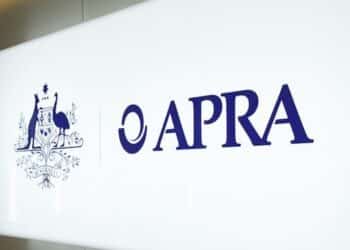The Reserve Bank of Australia (RBA) has kept the official cash rate on hold at 4.1 per cent for the fourth consecutive month – in line with market expectations.
All four major banks and AMP had tipped a pause, with Westpac chief economist Bill Evans going as far as claiming a hold was “certain”.
Mr Evans said the RBA typically assumes a conservative posture ahead of the release of the quarterly inflation print.
“The board meetings which occur immediately before the release of the quarterly inflation report and the updating of the staff’s forecasts (namely those in April, July, and October) have been ones where the board has shown a preference to pause – even during this long tightening cycle,” he said.
However, for other analysts, this latest RBA decision is further evidence of a shift in the central bank’s monetary policy outlook following mounting evidence of disinflation and a deterioration in macroeconomic conditions.
The October board meeting followed the release of the latest retail sales and job vacancies data, which supported the case for a more dovish RBA posture.
The Australian Bureau of Statistics (ABS) reported monthly retail sales growth of just 0.2 per cent (seasonally adjusted) in August – below market expectations of a 0.3 per cent increase. This followed a monthly reading of 0.5 per cent in July and 0.8 per cent in June.
In annual terms, retail sales slumped to 1.5 per cent – the slowest print since August 2021.
Meanwhile, job vacancies fell 8.9 per cent over the three months to 31 August and are down 18 per cent from the peak in May 2022.
However, according to AMP Capital chief economist Shane Oliver, there is a 40 per cent chance of another rate hike before the end of the year.
He said “still sticky” services inflation, upside risks to wages growth, poor productivity, and fuel price-driven upside risks to inflation would sustain a hawkish bent from the RBA.
The latest monthly consumer price index (CPI) stunted progress towards the RBA’s 2–3 per cent inflation target, rising 5.2 per cent in the year to August following a 4.9 per cent increase in the previous print.
This was underpinned by a 13.4 per cent increase in automotive fuel costs, a 12.9 per cent pick-up in gas and other household fuel costs, and a 12.7 per cent rise in electricity costs.
But despite these upside risks, Mr Oliver’s base case is for a prolonged pause to the RBA’s monetary policy cycle before new RBA governor Michele Bullock commences an easing cycle in mid-2024.
“[Another] rate hike would be very high risk as economic data is already slowing and we remain of the view that the risk of a recession is already around 50 per cent,” he said in his latest macroeconomic analysis.
“…Our assessment remains that the RBA has done more than enough to control inflation and that rates have peaked ahead of rate cuts starting around June next year.”
The Commonwealth Bank’s economic team agrees that the next rate move would be down but has revised its forecast for the first rate cut from March to May 2024.
“In our view, when looking at the data flow since the September meeting and the path ahead, the best course of action for the RBA will be to continue the pause seen in the cash rate since the June board meeting, maintaining a rate of 4.1 per cent,” CBA noted.
“The RBA’s forward guidance is, however, likely to continue to signal that the balance of risks is for a further rate hike in the near-term.”



